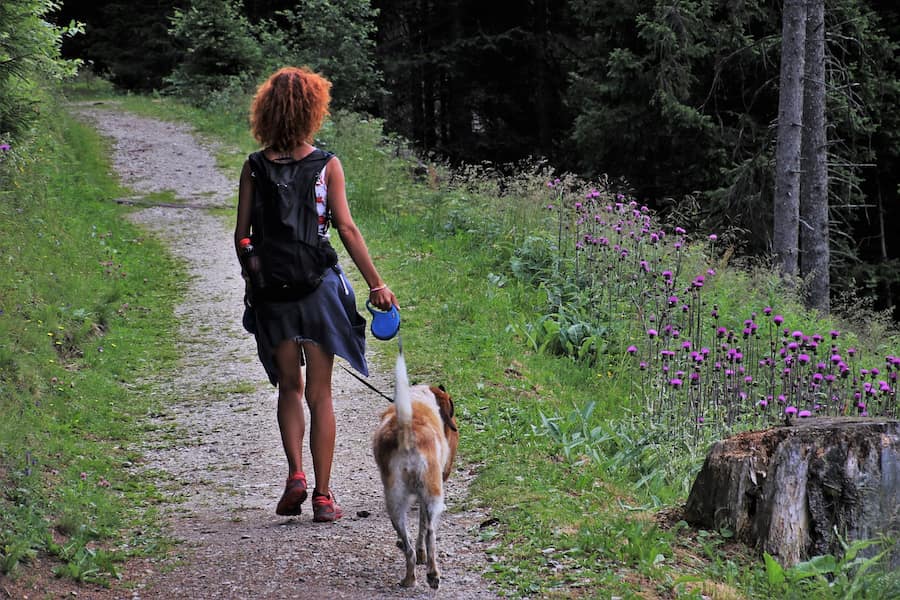How To Train Your Dog To Ignore Strangers
Is your dog too friendly and trusting, and would easily go off with a stranger? By training your dog to ignore strangers and avoiding dangerous situations, you can learn how to handle your overly friendly dog.
A friendly dog is a good sign of a dog that’s been properly socialized and even temperament–it’s something that a lot of dog owners strives for. However, dogs can sometimes reach a point of being a little too friendly, or at least too trusting. If you have a dog that you’re worried about, as they can have a tendency to go off with anyone they meet, it could put them in a potentially harmful situation. We’ll learn more about how to handle your overly friendly dog around strangers.
Is It Dangerous For A Dog To Be Too Trusting?
Whether you have friends over to the house or you’re paying a visit to a dark park, you want to know that your dog is going to handle the situation well. Although you want them to be friendly and outgoing, there’s a fine line between being friendly and being too trusting and, unfortunately, for some dogs, it can be hard not to see that line.
There’re people out there who would take advantage of your dog’s trusting nature if given the chance putting them in a harmful situation. For example, there’re people out there who steal dogs and sell dogs to laboratory research facilities or use them as bait for dogfighting. But if your dog doesn’t know that the person’s intentions are bad, they can’t help themselves from running right up to a stranger, wanting to make a new friend.
Training Your Dog to Only Listen to You
Although there’s nothing wrong with letting your dog make new friends, you have to remember that some breeds are inherently friendly and trusting to the point that they would unknowingly put themselves in a dangerous situation.
- You don’t want to teach your dog to be afraid of other people but at the same time you don’t want your dog to listen to just anyone using commands either—the best way to protect your dog is to teach them to follow only your commands. Here are some helpful tips to help you deal with your overly friendly dog:
- You need to make sure that your dog responds to basic obedience commands like Sit, Stay, and Come.
- You may need to reinforce your dog’s mastery of these basic commands outdoors while being in a distracting environment.
- Teach your dog the release command—use the stay command to have your dog hold this position until you release them.
- Practice the release command with other people around—You want your dog to hold the sit and stay for a few seconds as someone is approaching them, then you can finally use the release command if you’re fine with your dog greeting them.
- Teach your dog to look at you when you call their name—this one will need to be drilled home with plenty of repetition.
You can’t and shouldn’t expect to change your dog’s friendly nature or temperament, although a little extra training will go a long way from protecting your dog from unfamiliar strangers. You’ll also find that teaching your dog to know and hold the command until you release them has a number of other helpful purposes as well!
How Dog-Loving Strangers Ruin Well-Trained Dogs
Most dog owners have heard this one many times: “It’s okay, I love dogs!” Guess what—it’s not okay! Here’s the best way for dealing with friendly strangers who could undo your training.
Perhaps you’ve spent hundreds of dollars on obedience classes for your dog and, of course, the countless hours of teaching them not to jump up on people. Then all your efforts seem to quickly vanish as soon as an overly enthusiastic dog lover crosses your path–arms flailing, baby voice squealing, exclamations of “It’s fine, I love dogs!” as your dog jumps up covering the person with their muddy paw prints.
Although there’s not much you can do to train the human in this scenario, you have some options to keep your dog under control when greeting other humans.
Be Prepared
You first need to be prepared for the encounter well in advance. You probably recognize the signals that someone is excited and looking to greet your dog well before they reach you. Sometimes it can seem as if your dog has a magnetic pull holding that person’s gaze and drawing them in for half a block.
When you start to notice a person coming, body block your dog. So, for example, if a person is approaching on your left, bring your dog to your right side, shorten your leash enough so your dog won’t lunge in front of you, and be prepared to use your body as a barrier between your dog and the over-friendly stranger.
To Greet Or Not To Greet
From there, you’ll have a decision to make: should you let your dog greet the person? You’re under no obligation to stop and say hello. Although, it’s a little cold to ignore someone who clearly wants to greet your dog, keep in mind that the person won’t think twice about undoing your training and hard work, simply because they want to get their hands on something fluffy.
It’s perfectly fine to keep up a fast-paced walk past the person, giving a friendly smile and a quick “I’m sorry, we’re training” as you pass.
If you decide to let the person greet your dog, it’s important to have a plan in place to keep your dog under control through the encounter. Here is one strategy:
If you’re confident that your dog will calmly sit while the person approaches, then pull over to the side a bit and ask for the sit command. If you think your dog won’t hold a sit while the stranger is approaching, then a stand is fine, but the goal is to keep all four paws on the ground.
Introduce treats while your dog is sitting (or standing). Reward your dog for maintaining their calm position and their mind on you rather than the new potential friend walking towards you. The frequency of your treats will be determined by how excited your dog is. A moderately excited dog could only need a treat every five seconds in order to keep them still, whereas a dialled-to-10 excited dog will need treat after treat.
As the stranger reaches you, continue with the treats as they pet your dog. This teaches your dog that it’s much more rewarding to sit or stand politely while being petted, rather than bouncing all over the place.
When the person starts to walk away, the treats should stop, and it’s best to briskly walk away so your dog doesn’t try to jump on the stranger as they go.
You’ll eventually find that, with practice, you’ll be able to add longer and longer pauses between giving your dog treats, but let your dog’s excitement level dictate the frequency you dispense treats.








